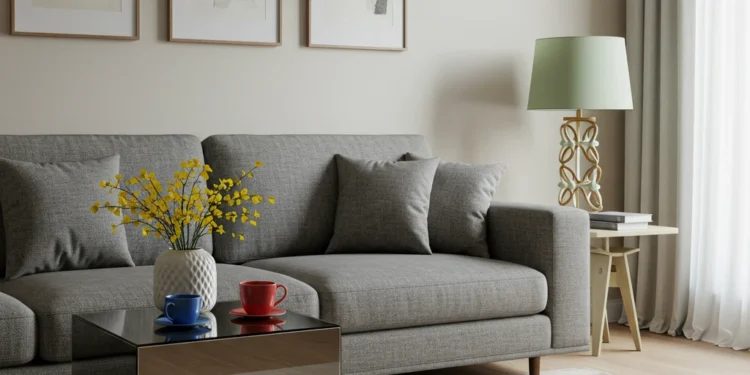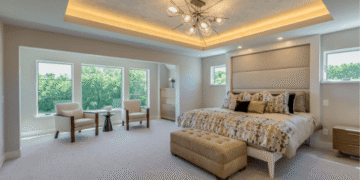Echo fades when surfaces stop throwing sound back at you. A quiet room feels sharp and calm during work or study. Panels tame reflections so words stay clear without raising the volume. You can reach that result with simple tools plus steady planning. Measure the space, then choose a layout that fits your style. Mark positions with care so every piece lands with purpose. Fixings hold better when surfaces are clean and dry. Test before you finish, since small shifts can improve balance. Follow the steps below for a smooth project from start to finish.
Acoustic Basics
Every hard surface reflects energy that blurs speech during normal tasks. You need materials that turn vibration into gentle heat through friction inside fibers. Such behavior belongs to sound absorbing panels when fibers create tiny paths that slow air movement. Thick pieces work on lower notes, while thin pieces target higher notes. A mix across heights shapes a balanced result without heavy coverage. Corners can trap low notes so dedicated pieces improve that area. Ceiling clouds bring clarity above tables without stealing wall space. Start with modest coverage, then listen with fresh ears.
Room Assessment
Begin with a short read then follow these points for clear measurements
• Clap near walls then listen for long tails that mask speech during calls
• Note floor texture since hard surfaces reflect energy that raises overall blur
• Measure width height length so coverage targets follow real numbers not guesswork
• Sketch door window furniture since panels need space away from moving parts
• Mark first reflection points using a mirror test across common seating locations
• Identify noisy gear since panels near machines cut sharp spikes during work
• Decide target zones for talk areas so effort focuses on daily activity
• Choose a style palette that blends with decor since harmony encourages use
Panel Materials
Mineral fiber blocks give strong control with stable edges that resist sag. Polyester felt feels lighter and brings smooth surfaces that accept simple mounts. Wood faced cores add texture that reflects some energy while letting the rest pass through the core. Fabric wraps protect cores while adding color across the room. Breathable fabric helps fibers work since sealed skins block airflow. Fire ratings matter for safety so pick products with clear labels. Matching thickness across a set makes results predictable across zones. Choose finishes that clean easily since dust dulls color over time.
Layout Planning
Read this guide then set positions using these steps for a clean map
• Aim for symmetry across the main wall so stereo imaging remains balanced
• Place panels at ear height so speech remains crisp during seated conversations
• Offset repeating lines to avoid visual monotony across long spans of wall
• Leave small gaps between pieces so seams remain straight across the full row
• Treat opposite walls to stop ping pong reflections that smear consonant sounds
• Use corner traps where boomy tones linger during music or video playback
• Add ceiling pieces above tables where chatter piles up during meetings
• Keep outlets clear so maintenance stays simple during busy seasons
Mounting Methods
Adhesive works on smooth paint but needs clean surfaces plus steady pressure. Clip rails allow removal without marks which helps renters or frequent movers. Z cleats create tight fits that hold flush without wobble. For heavy cores you should use anchors that match the wall material. Timber frames accept screws, while masonry needs plugs that fit the drill size. Always start with a pilot hole so placements stay true. A level tool protects lines from drift across longer spans. Tape temporary templates before drilling so spacing reads well from a distance.
Safety Prep
Protect hands with gloves during cutting since fibers can feel coarse on skin. Wear glasses during drilling since dust can irritate eyes during normal work. Ventilate the room whenever adhesive cures since fumes can linger without airflow. Store panels flat so frames remain square before the mount begins. Keep fixings organized so each step moves without searching or delay. Lay drop cloths to catch dust that falls during drilling or sanding. Mark hidden wires before drilling by tracing conduit paths from switches. Work slowly because a careful pace prevents costly mistakes.
Installation Steps
Read the short primer then follow these points for a tidy workflow
• Snap chalk lines that guide rows so every edge aligns without later corrections
• Dry-fit panels on the floor to confirm spacing that matches your sketch
• Pre drill cleats where needed so wall holes stay centered across each run
• Mount the first piece perfectly level since every row echoes that line
• Seat each panel with firm pressure so contact covers the full back surface
• Check gaps with spacers so seams remain even across the entire array
• Listen after the first set then adjust positions before finishing remaining zones
• Clean dust with a soft brush so the fabric looks fresh across the room
Finishing Touches
Edges look sharp when seams line up with baseboards or picture rails. Corners feel neat when returns match the depth of the main field. Add lights that graze surfaces so textures appear rich without harsh glare. Label the back of frames so future moves take less time. Keep a small kit with spare clips and touch-up paint for quick fixes. Take photos with measurements since records help during later upgrades. Invite a friend to speak from different seats so you can judge coverage. Small tweaks now save long edits later.
Sound Well Spent
A steady method turns noise into clarity without heavy cost or fuss. You measured space then planned coverage, then mounted with patience. Now speech sits forward while music holds shape across seats. Keep records for future moves and keep tools ready for small fixes. When friends ask, you can show steps that anyone can copy. For ongoing learning, save sources that compare materials and styles with clear tests. If you want a shortcut, check sound-absorbing panels during searches so results stay relevant. Better rooms start with simple steps done carefully.











